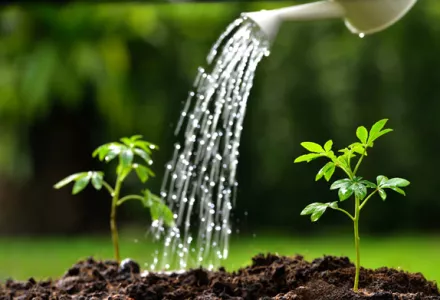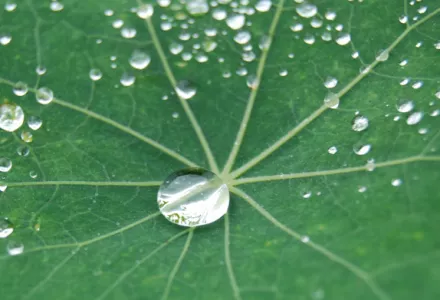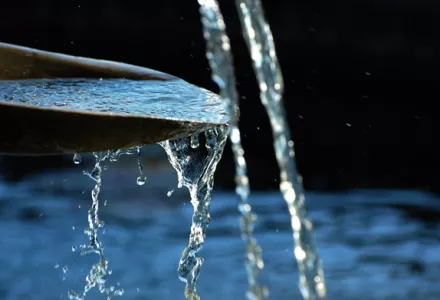Good quality water is the foundation of all soilless growing, however not everyone is blessed with a suitable water source for hydroponics. Even crystal clear water may contain a range of minerals, water treatment chemicals and pathogens which can damage plants and cause slow growth. Luckily, water is relatively easy to treat and some growers choose to install small reverse osmosis (RO) units just to ensure their water is always top quality.
Water types and potential problems
Water can be sourced from wells, or collected from roofs, streams, rivers or dams, but many growers are reliant on municipal or city water supplies and while these are usually safe to drink, they can sometimes pose problems for plant growth. The main quality problems encountered with different water types are as follows.
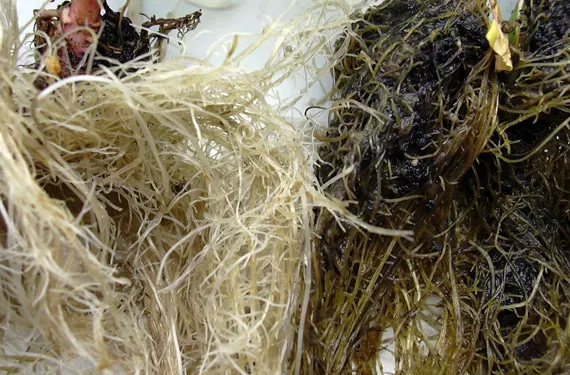
Ground water (streams, rivers and dams)
Ground water sourced from rivers, streams or stored in dams/reservoirs typically poses the most problems for soilless growers, particularly if the water is not treated before use. Water which is continually exposed to air and soil becomes contaminated with organic matter, minerals leach from the surrounding area, and pathogen spore loading can be high.
Many greenhouse operations use open air storage dams as an economic method of storingholding large volumes of water collected from greenhouse roofs or other surfaces, however this water is typically filtered and treated before use. River or stream water often has inconsistent water quality as operations being carried out up stream affect composition of the water and rainfall and flow rates also fluctuate throughout the year.
Well water
Water from wells in different locations around the world can vary considerably in quality. Very deep wells passing through certain soil layers will give an almost `filtered water’ although some minerals are always likely to be present in ground water. Some wells, particularly older types, or those which have been poorly maintained and are shallow can present problems with contamination from pathogens, nematodes and agrichemicals leached through the upper soil layers into the well water.
Well water may be `hard’ and contain levels of dissolved minerals such as calcium and magnesium and other elements depending on the soil type surrounding the well. High levels of sodium and trace elements are the most problematic for hydroponic growers. Soilless growers utilizing well water are advised to have a complete analysis carried out on their water source to determine if any potential problems exist.
Rain water
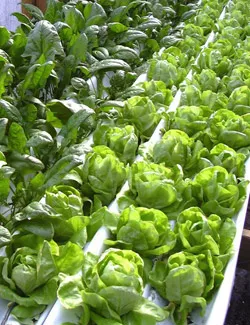
Rain water is generally low in minerals, however acid rain from industrial areas, sodium from coastal sites and high pathogen spore loads from agricultural areas do still occur. Much of this contamination has been found to happen when rain water falls on roof surfaces and picks up the organic matter, dust and pollutants which naturally collect there.
Rain water is best collected from clean surfaces with a ‘first flush’ device installed. which allows the first few minutes of rainfall to be discharged from the roof before any is collected for use.
Rain water may also contain traces of zinc and lead5 from galvanized roof surfaces or where lead flashings and paint may have been used and is a greater problem when the pH of the rain water is low. Generally, rain water collected from greenhouse roofs is free of zinc and lead problems.
Hard or soft water
‘Hard’ and ‘soft’ are terms used to describe the quality of many water sources. Hard water has a high mineral content, which can cause hard, white lime scale to form on surfaces and growing equipment.
While hard water sources do contain useful minerals (Ca and Mg), these can upset the balance of the nutrient solution and make other ions less available for plant uptake. Smaller growers can counteract this by making use of one of the many ‘hard water’ nutrient products on the market. Soft water, by comparison, is a low mineral water source. Often rainwater is ‘soft’, while municipal water sources across the country range from very hard to soft, depending on where the individual city water supply is taken from.
Other water types
Some growers prefer to start with water which has been pre-treated to remove any chemicals, pathogens and other contaminates. RO (reverse osmosis), distilled water, filtered and bottled water are all options for small growing systems and those concerned with water quality.
City or Municipal
Water supplies
How a particular water source is treated, either before it reaches the grower or afterwards, has a significant effect on its quality. City supplies of water are treated to ensure that the water meets the World Health Organisation standards for mineral, chemical and biological contamination. This means there is quite a wide range of water treatment chemicals which may be added to a city water supply.
These aim to produce a water which is safe for drinking, won’t corrode pipes, leave lime scale deposits, have an offensive smell or stain and be generally acceptable for human use. However what is safe for people, may not be suitable for plants, particularly those in water culture and recirculating systems with little growing media to act as a buffer.
Water quality
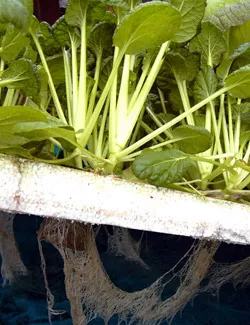
Many city water sources are perfectly acceptable for soilless growers and hydroponic systems and can be used with no adjustment or treatment. In the past, the main concern was chlorine in city water supplies. High levels of chlorine can be toxic to sensitive plants, however chlorine dissipates rapidly into the air and can easily be removed by aerating the water or just letting the water sit or age for a few days before use.
However, it has been found that some human pathogens were resistant to the action of chlorine, and consequently drinking water regulations were changed and alternative disinfection methods are being used more frequently. These days, water may still be chlorinated, but an increasing number of city water supplies have switched to use of ozone, UV light, chloramines, and chlorine dioxide. The use of chloramines and other chemicals by many city water treatment plants can pose a problem for plants where high levels are regularly dosed into water supplies.
Chloramines are much more persistent than chlorine and take a lot longer to dissipate from treated water, hence they can build up in hydroponic systems and cause plant damage. Growers can treat the water with specifically designed activated carbon filters or by using a dechloraminating chemical or water conditioners which are sold by the aquarium trade to treat the water for fish tanks.
Tips and tricks for growers
1. How do you know if you have a water quality problem?
The simplest method of determining if water quality is the cause of growth problems is to run a seedling trial – growing sensitive seedlings such as lettuce using RO or distilled water as the ‘control’ or comparison will usually show up any problems originating from the water supply. Comparing growth in the pure water to the suspected water sample will reveal any problems. Water quality problems may show as stunted roots which don’t expand downwards, short, brown roots, yellowing of the new leaves, stunted foliage growth, sunken brown spots on the foliage, leaf burn and even plant death.
2. What to do about suspected microbial contamination
Water sources which may not have been treated and may contain disease pathogens such as ground, river or steam water can be relatively easily cleaned up by the grower before use. The safest options are UV, ozone and slow sand filtration as these won’t leave chemical residues which may harm young, sensitive root systems. Small UV treatment and filtration systems such as those used in fish ponds and aquariums are suitable for treating water for hydroponic use and will kill plant pathogens and algae.
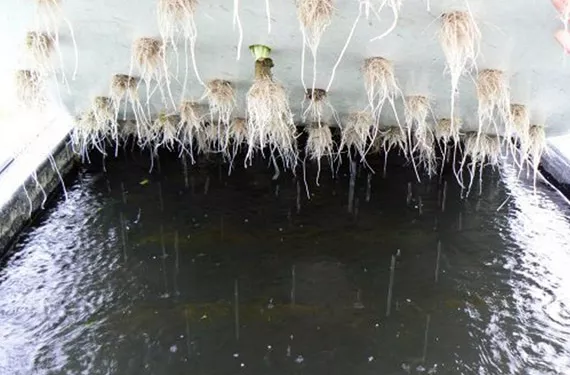
3. What to do about other contaminates and treatment chemicals
Activated charcoal (slow) filters are still one of the more reliable and inexpensive ways of removing suspected contaminates from a water supply. If chlorine alone is a problem, aerating the water for 48 hours by using a small air pump will dissipate this chemical. Using substrate-based systems incorporating a media such as coco fibre will give a greater degree of protection and ‘buffering’ capacity where chemical contaminates are suspected.
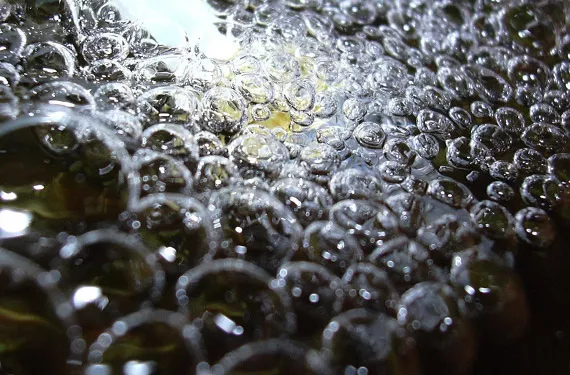
4. What to do about excess minerals
Often it is possible to dilute a water supply which may have a slight excess in certain minerals, particularly trace elements, with a higher quality water source, however for water sources with a high natural salinity reverse osmosis or distillation are the only methods of demineralization. Some crops such as tomatoes are far more tolerant of excess minerals and salinity than others such as lettuce, so this factor should be taken into account.
5. What to do about ‘hard’ water with a high pH
Hard water is best treated with acid to lower the pH to 6.5 before adding any nutrients to make up the nutrient solution or before using the water to top up a nutrient reservoir. Hard water also contains minerals such as calcium and magnesium, so using a specific ‘hard water’ nutrient formulation or product in recirculating systems (like CANNA Substra Hard Water) is advised, since these will keep nutrient ratios more in balance and also assist with keeping pH in check.

